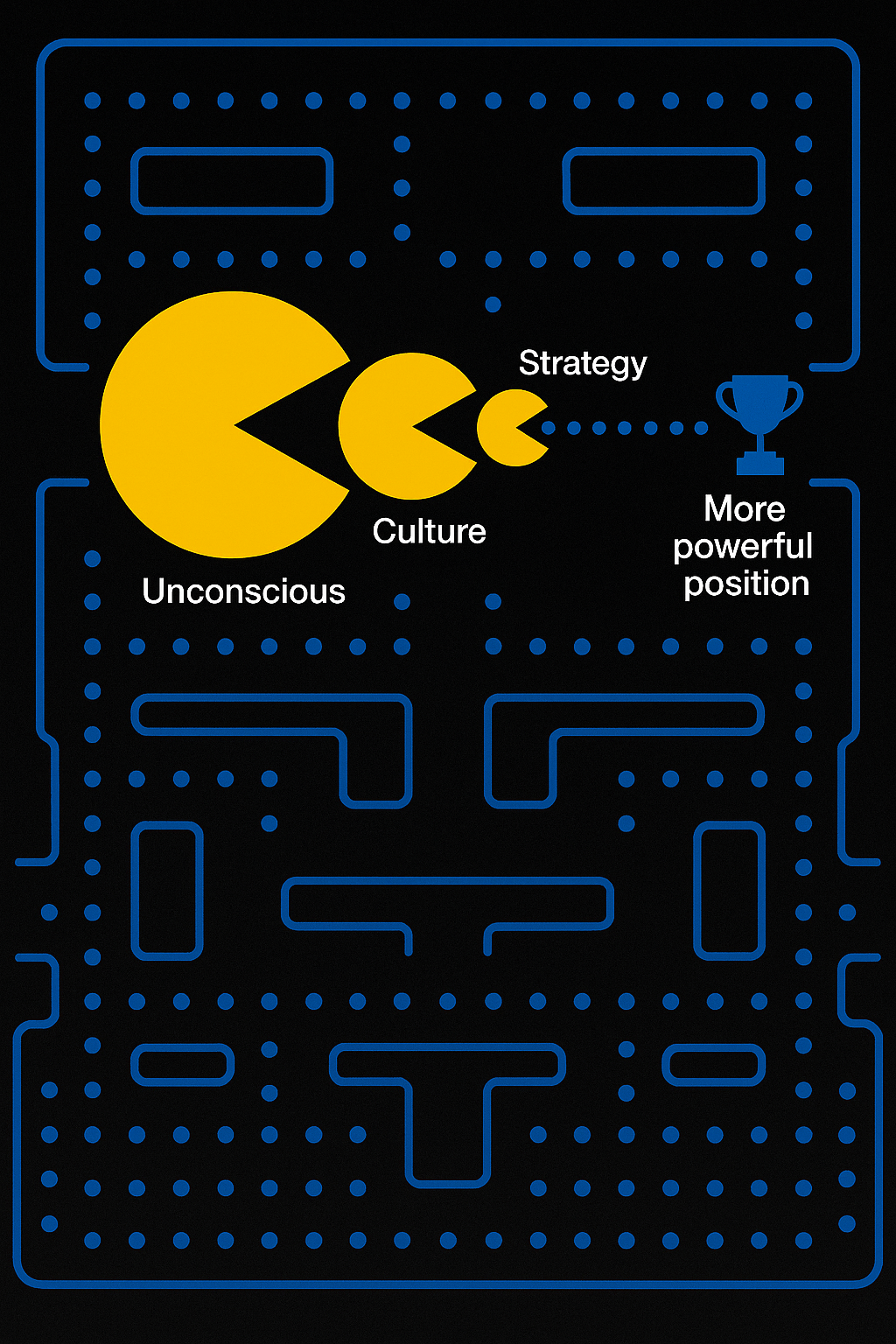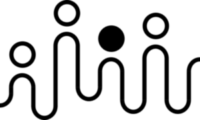This article is part of a series called, Surface Tension. The introduction article contains links to all other articles.
When implemented together, these eight strategies create a systemic approach to working with unconscious forces in organisations. Rather than treating them as separate initiatives, they form an integrated practice where each reinforces the others.
The strategies pull together, each strengthening the others to create a robust approach to organisational change and transformation.
As leaders develop X-ray vision to see beneath surface behaviours, they need containers for anxiety where these observations can be safely processed—one without the other creates either awareness without action or process without insight.
Similarly, moving beyond team-building workshops reveals unconscious role patterns that the hot seat brings into sharp relief through candid feedback, creating a powerful cycle of discovery and growth.
The DAC model provides a clear diagnostic framework for analytical thinkers, making these psychological dynamics concrete and measurable.
Building in pause creates the space for reflective practitioners to integrate learning and shift leadership consciousness.
For pragmatists, these approaches translate into tangible outcomes—problems surface earlier, conflicts become productive rather than destructive, and persistent tensions transform from frustrating roadblocks into creative polarities.
The treasure hidden within these approaches isn't just better executing existing strategies but the emergence of new possibilities that remain invisible when unconscious forces go unaddressed.
As the poet David Whyte observed, "The conversation you are not having is the conversation that will change your organisation." These approaches create space for those unheard conversations to emerge finally.
In facing these complex dynamics, the temptation is to reach for more sophisticated tools, clearer frameworks, or better metrics. Resist this. The fundamental challenge isn't technical but adaptive.
It isn't about what you do but who you are becoming as a leader and who your people are becoming through your leadership. Work with the unconscious in your organisation rather than trying to control it.
The leaders who thrive tomorrow won't be those with the clearest strategy decks or most compelling vision statements but those who can skilfully navigate these deeper waters.
Jung observed: "Until you make the unconscious conscious, it will direct your life, and you will call it fate."
For organisations: "Until you make the unconscious conscious, it will direct your strategy, and you will call it market forces."
The genuinely strategic leader recognises that working with these forces isn't a distraction from leadership—it is leadership. Everything else is just rearranging deck chairs while unconscious currents determine your actual direction.
The choice isn't whether these forces will influence your organisation—they already do. The choice is whether you will work with them intentionally or the forces will work on you while you occupy yourself elsewhere.

Where These Ideas Come From
This article's thinking and insights draw on a wide range of influential leaders, thinkers, and practitioners who have shaped my approach to working with unconscious dynamics in organisations over the past years.
Wilfred Bion's pioneering work on group psychology, particularly his ideas on containment and group defences, provides the theoretical backbone for understanding how anxiety influences organisational behaviour. Similarly, the Tavistock Institute's groundbreaking group relations research informs how informal psychological roles become entrenched within teams.
Barry Johnson's Polarity Management, a powerful framework for handling ongoing organisational tensions, has deeply influenced my approach. I've experienced its effectiveness first-hand, having trained to run Johnson's Organisational Workshop—a powerful simulation where teams experientially learn to navigate complex systemic dynamics.
Donald Schön's insights into reflective practice, Ray Dalio's institutionalised reflective processes at Bridgewater, and historical examples like Admiral Nelson's "band of brothers" demonstrate how deliberate reflection strengthens organisational intelligence.
Ronald Heifetz's metaphor of "getting on the balcony" encapsulates the dual stance required of leaders who must engage deeply while maintaining perspective. Bill Torbert's Action Logics clarify how leaders can evolve their thinking to handle greater complexity and ambiguity.
The "hot seat" feedback method emerged for me initially through AIESEC in the 1980's and was further honed through intense personal development work in the Mankind Project in 2001. I've since adapted this approach, facilitating candid, high-impact conversations for executives over the past two decades.
My long-term relationship with the Centre for Creative Leadership introduced me to the Direction-Alignment-Commitment (DAC) model, which I've repeatedly used to diagnose and enhance leadership effectiveness in executive teams and in running Leadership Development programmes.
David Kolb's experiential learning cycle has provided a clear framework for structuring strategy sessions, workshops, and coaching conversations, allowing me to align learning processes with practical outcomes.
Alan Mulally's turnaround at Ford illustrates the transformative power of transparency, while Ed Catmull at Pixar showcases how creating safe containers can channel anxiety into creativity.
Satya Nadella's shift at Microsoft from a "know-it-all" to a "learn-it-all" culture emphasises the need to address deeper unconscious patterns rather than superficial team-building exercises.
Lastly, my exploration of the unconscious through more than 15 years of therapy has significantly shaped my understanding of unconscious dynamics, both personally and professionally. This knowledge informs how I navigate these deeper waters with CEO clients and their teams.
Together, these influences and personal experiences form the bedrock of my practical approach to ensuring unconscious forces strengthen, rather than sabotage, organisational strategy.
